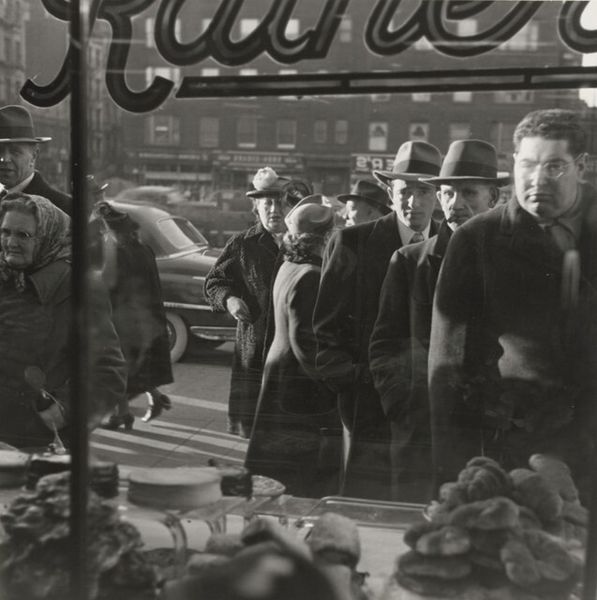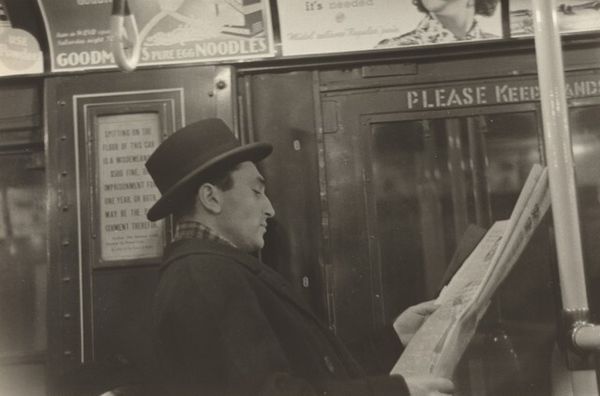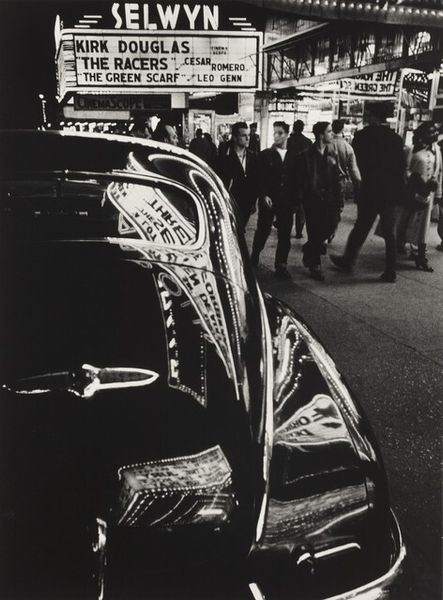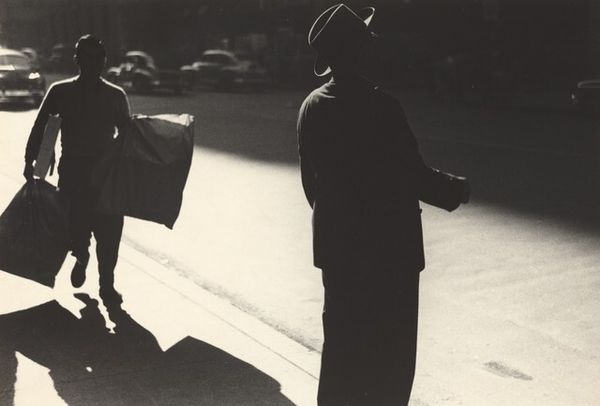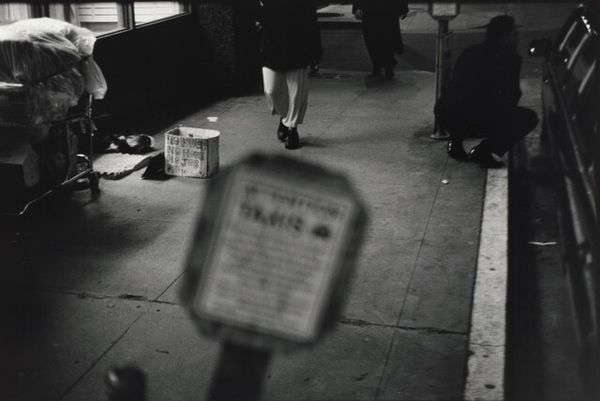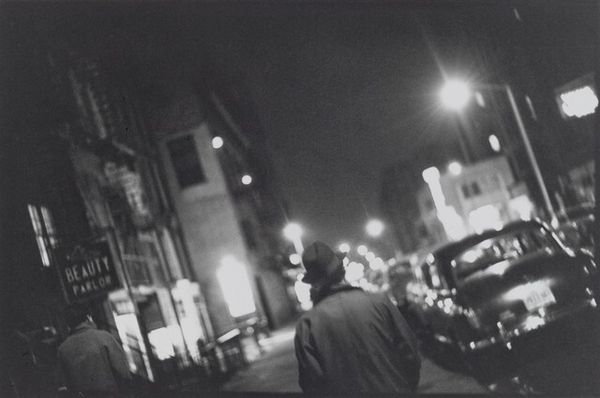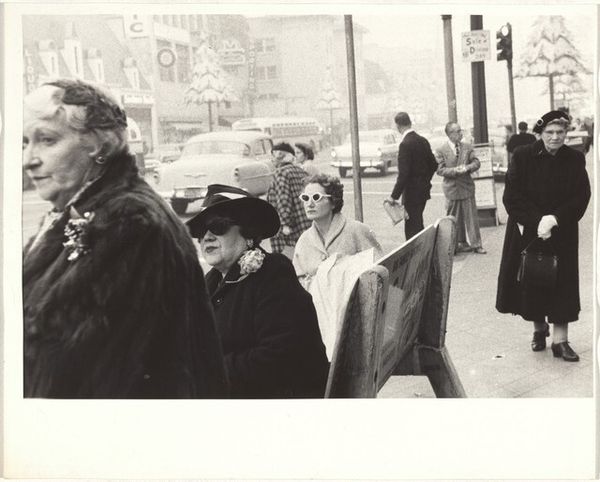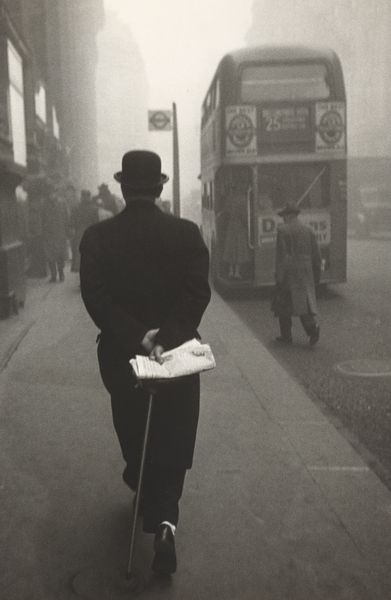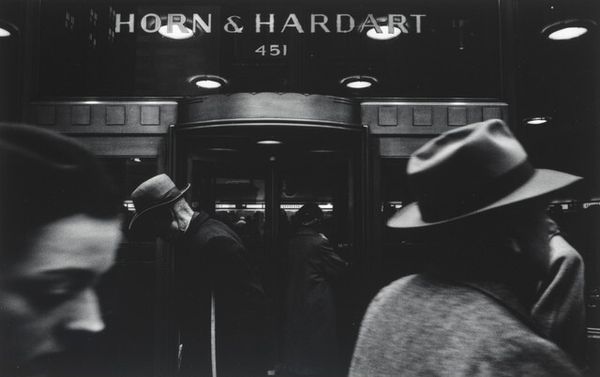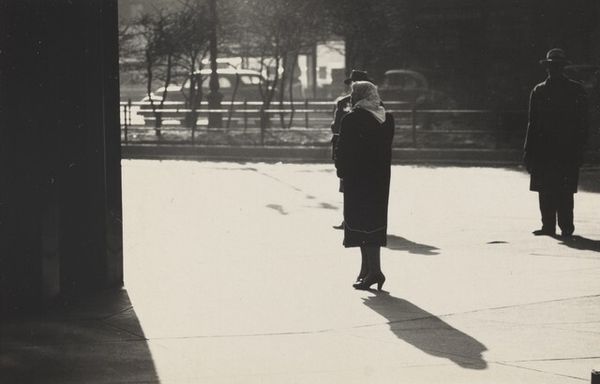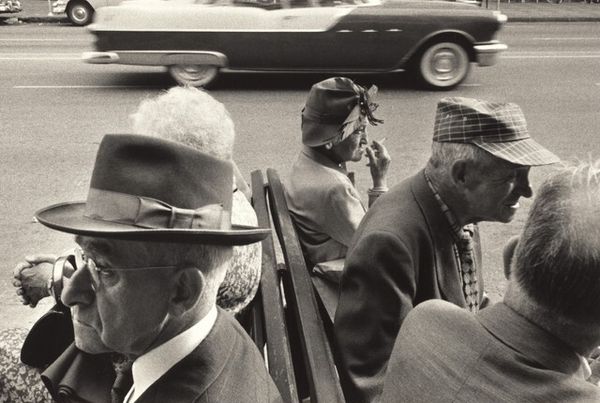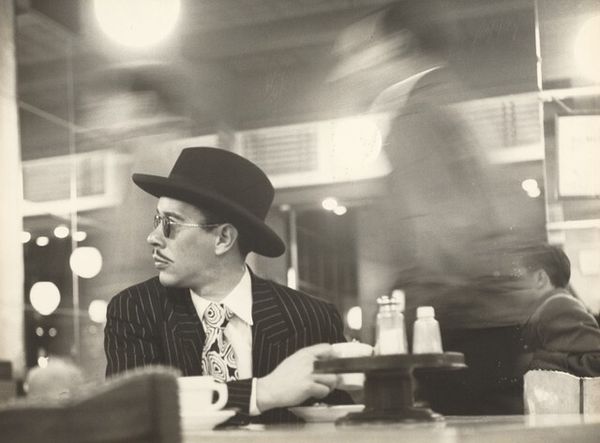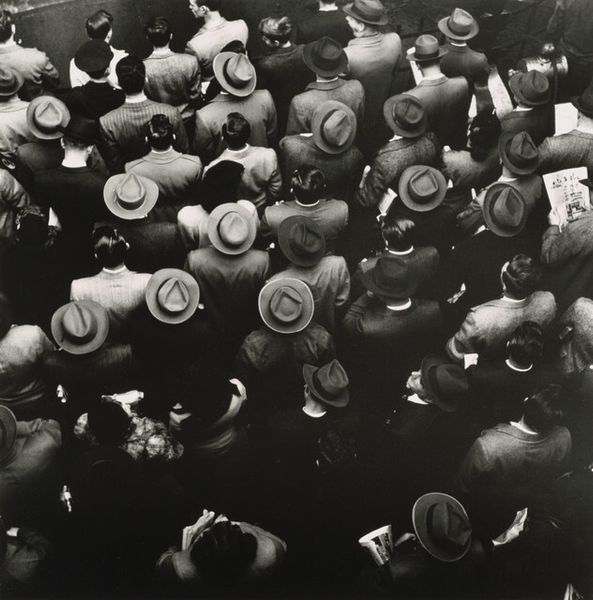
photography
#
portrait
#
wedding photograph
#
black and white photography
#
black and white format
#
archive photography
#
street-photography
#
photography
#
historical photography
#
black and white theme
#
black colour
#
black and white
#
monochrome photography
#
cityscape
#
monochrome
#
realism
Dimensions: image: 19 × 24 cm (7 1/2 × 9 7/16 in.) sheet: 20.32 × 25.4 cm (8 × 10 in.)
Copyright: National Gallery of Art: CC0 1.0
Curator: Godfrey Frankel’s 1946 photograph, “Times Square Restaurant, Looking Out at People,” presents a compelling snapshot of mid-century urban life. Editor: My initial feeling is one of detachment. We're viewing this bustling street scene as outsiders, separated by the glass. There's a kind of emotional remove at play, heightened by the stark monochrome. Curator: The glass acts as a liminal space, a symbolic barrier between observer and observed, doesn’t it? Notice how the composition draws attention to the symbolic headwear. Most of the figures on the left don fedoras, soft felt hats with creased crowns. This sort of headdress originated as a feminine style in the late 19th century and became wildly popular among men by the early 20th century. We can even glimpse earlier styles: A woman toward the center of the image wears a small ornamented cap while an elderly woman to the right has wrapped her head with a kerchief or babushka. Editor: Those sartorial signifiers absolutely ground this in its historical moment. The hats especially scream 1940s. But to me, they also represent conformity, the way these individuals were expected to present themselves in public. There’s also an economic dimension here. They bespeak a middle-class aspiration, a desire for upward mobility amid the post-war boom. Curator: An interesting reading! And certainly plausible, especially if you consider Frankel's work as a product of its era. Symbolically, however, clothing almost invariably indicates belonging. Uniformity, or “conformity,” is a mode of expressing adherence to a set of principles—an alignment of cultural or even political will. Here, I notice too the strong, nearly brutal, contrast between light and shadow, almost cinematic, reinforcing that era’s prevailing attitude. Editor: That harshness can also be read as a reflection of the post-war anxiety that permeated American society, don't you think? On one hand, we have images of plenty; on the other, the trauma of conflict. We see the people outside the bakery case; what of those who couldn't even afford the glass separating them from that bounty? Curator: Perhaps it speaks to the complexities inherent in symbols; they aren’t fixed, static entities, but rather shifting reflections of culture and personal experience. A hat could just be a hat, or it could be so much more. Editor: Exactly! And Frankel's photograph invites us to consider these multiple layers of meaning. The artwork does a remarkable job of freezing a moment and encapsulating so much social and psychological texture.
Comments
No comments
Be the first to comment and join the conversation on the ultimate creative platform.
